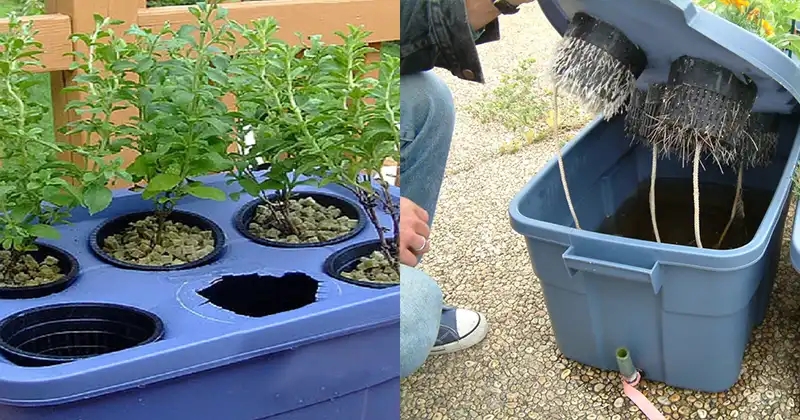Grow Your Favorite Herbs at Home: DIY Hydroponic System

If you’re interested in growing your own herbs on your balcony but don’t have a lot of space, a small hydroponic setup can be a perfect solution. Hydroponics, the practice of soil-less gardening, replaces traditional soil with a nutrient-rich water solution. In this DIY guide, we’ll explore a method that doesn’t require an air pump and instead uses a wicking system to draw nutrient solution to the plant roots.
Materials You’ll Need:
- Recyclable plastic box or container (size based on your requirements, at least 15cm deep)
- Drill
- Mineral-rich water solution (recipe provided in Step 3)
- Net pots or recyclable plastic planters
- Growth medium (e.g., clay pellets, cocopeat, perlite)
- Seeds of your choice
- Rope-like material made of felt or fabric
Step 1: Choose the Kind of Unit You Would Like to Go With
Do-it-yourself hydroponic systems come in various forms, and for this guide, we’ll be using a recyclable plastic box or container. You can easily find these materials locally or repurpose containers you already have.
Step 2: Decide the Growth Medium to Be Used
Select a suitable growth medium for your herbs. Options include rockwool, clay pellets, cocopeat, coconut fiber/chips, perlite, or vermiculite. Choose one that best suits your needs and the herbs you plan to grow.
Step 3: Make Your Nutrient Solution
Prepare a nutrient solution by combining primary nutrients (nitrogen, potassium, magnesium), secondary nutrients (calcium, sulfur, phosphorus), and micronutrients (iron, copper, manganese, zinc, molybdenum). Here’s a recipe for a 20-liter solution:
- 25 ml calcium nitrate
- 1.7 ml potassium sulfate
- 8.3 ml potassium nitrate
- 6.25 ml monopotassium phosphate
- 17.5 ml magnesium sulfate
- 2 ml trace elements
Store the nutrient solution in a food-grade container at room temperature, away from light, and shake it well before using.
Using the Wicking System for Herb Gardening:
- Prepare the Reservoir: Buy or repurpose a recyclable plastic box or container. Ensure it’s at least 15cm deep and suitable for your herbs. Drill holes in the lid for the rope-like material to pass through.
- Fill with Nutrient Solution: Pour most of the prepared mineral-rich water solution into the box, leaving approximately a 3-inch space from the top.
- Insert the Wicking Material: Pass the rope-like material (made of felt or fabric) through the holes in the lid. One end should be in contact with the nutrient solution inside the box, and the other end should extend out for planting.
- Plant Your Herbs: Insert net pots into the holes on the lid. Fill these net pots with your chosen growth medium and plant your herb seeds. The wicking material will draw the nutrient solution from the box up to the roots of your herbs.
Pro Tips for Herb Gardening:
- Choose herbs suitable for hydroponic growing, such as basil, mint, cilantro, and parsley.
- Ensure your balcony receives adequate sunlight or use grow lights if needed.
- Regularly monitor nutrient solution and water levels, and maintain the pH within the correct range for your herbs.
- Watch for pests and diseases and take appropriate measures to protect your herb garden.
With this modified method, you can create a simple and efficient hydroponic system on your balcony for herb gardening without the need for an air pump. Enjoy growing your own fresh herbs with this soil-less gardening method. Happy herb gardening!



















